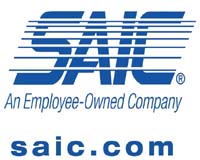 |
Cape Canaveral, Florida (AFP) Feb 25, 2011 Once the US space shuttle program closes, it will be about a decade before America can make a new vehicle for sending astronauts to space, NASA's chief technologist predicts. When the longtime centerpiece of US spaceflight shutters later this year, NASA will focus on experiments at the International Space Station (ISS) and on partnerships with private industry to build new spacecraft, Robert Braun told AFP in an interview this week. But with spending squeezed and NASA at odds with lawmakers over a 2016 timeframe for building a new heavy-lift rocket and crew vehicle to replace the 30-year-old shuttle program, Braun said that developing the future mode of travel could take longer than Congress, or the US public, may want to hear. "Let's call it -- think about it as a decade if you want to put a time stamp to it," said Braun, who gathered along with a host of veteran astronauts, politicians and space enthusiasts at Kennedy Space Center on Thursday to witness the final blastoff for the Discovery space shuttle. "In that decade not only will we fully utilize the International Space Station but we will develop the capabilities to send humans up and down through the commercial crew program and to send humans beyond low Earth orbit with the space launch system and the multipurpose crew vehicle," he said. "What specific year in that decade I think does depend a lot on budgets but I am pretty comfortable with it in that timeframe." NASA told Congress in January that it could not afford to build a new heavy lift rocket and space capsule within the five-year timeframe and budget outlined in the fiscal year 2011 and President Barack Obama's 2012 budget request. "None of the design options studied thus far appeared to be affordable in our present fiscal conditions, based upon existing cost models, historical data, and traditional acquisition approaches," said a NASA report to lawmakers. A second NASA progress report is due in April, with the shuttle Endeavour scheduled for its crowning journey to the ISS on April 19, followed by Atlantis June 28. After that, Russia's Soyuz space capsule will provide the sole method of transport for astronauts to and from the orbiting ISS. The US shuttles typically tote six or seven astronauts at a time; Soyuz tops out at three. While critics raise concerns about risks tied to the more limited travel options, Braun said there are plenty of benefits to go around. "The Russians have proven themselves to be a vibrant partner in the ISS to date," said Braun. "I would say that the Russians are dependent upon the United States for operations of the International Space Station, we will for some time be dependent on them," he said. "I think that is the nature of a partnership. All partnerships I have ever been involved in, both parties gain something from that collaboration." In the meantime, NASA will turn its efforts toward space experiments on the ISS -- everything from recycling drinkable water in space to finding ways to protect human space travelers from radiation and the ravages of microgravity. "Think about what it might take to send humans off into deep space -- not only do they have to be protected from the radiation environment but they have to live sustainably in space for long periods of time," said Braun. Another key focus of NASA and its international partners is sending a roving robot explorer to Mars, with the launch of the Mars Science Laboratory set for later this year and a landing in 2012, he said. Braun said the US space program is far from finished. "My job is to basically think about NASA's future and I spend almost all my time doing so and I can tell you that NASA's future is very strong," he said. "NASA is bigger than the space shuttle. Human space flight is bigger than the space shuttle," said Braun. "If you think about it as a book, we are going from one chapter to another chapter. In this new chapter, the International Space Station goes from something that is being constructed to something that is being fully utilized by the international community," he said. "What we are really talking about is a transition of the human spaceflight program, certainly not an end."
Share This Article With Planet Earth
Related Links Space Tourism, Space Transport and Space Exploration News
 NASA Awards SAIC $62 Million Information Technology Contract Extension
NASA Awards SAIC $62 Million Information Technology Contract ExtensionMcLean VA (SPX) Feb 23, 2011 Science Applications International Corporation (SAIC) has announced it was awarded a contract extension by the National Aeronautics and Space Administration (NASA) for the Unified NASA Information Technology Services (UNITeS) contract to continue providing a broad range of information technology (IT) services in support of the NASA Information Technology Service Network. The extension has ... read more |
|
| The content herein, unless otherwise known to be public domain, are Copyright 1995-2010 - SpaceDaily. AFP and UPI Wire Stories are copyright Agence France-Presse and United Press International. ESA Portal Reports are copyright European Space Agency. All NASA sourced material is public domain. Additional copyrights may apply in whole or part to other bona fide parties. Advertising does not imply endorsement,agreement or approval of any opinions, statements or information provided by SpaceDaily on any Web page published or hosted by SpaceDaily. Privacy Statement |